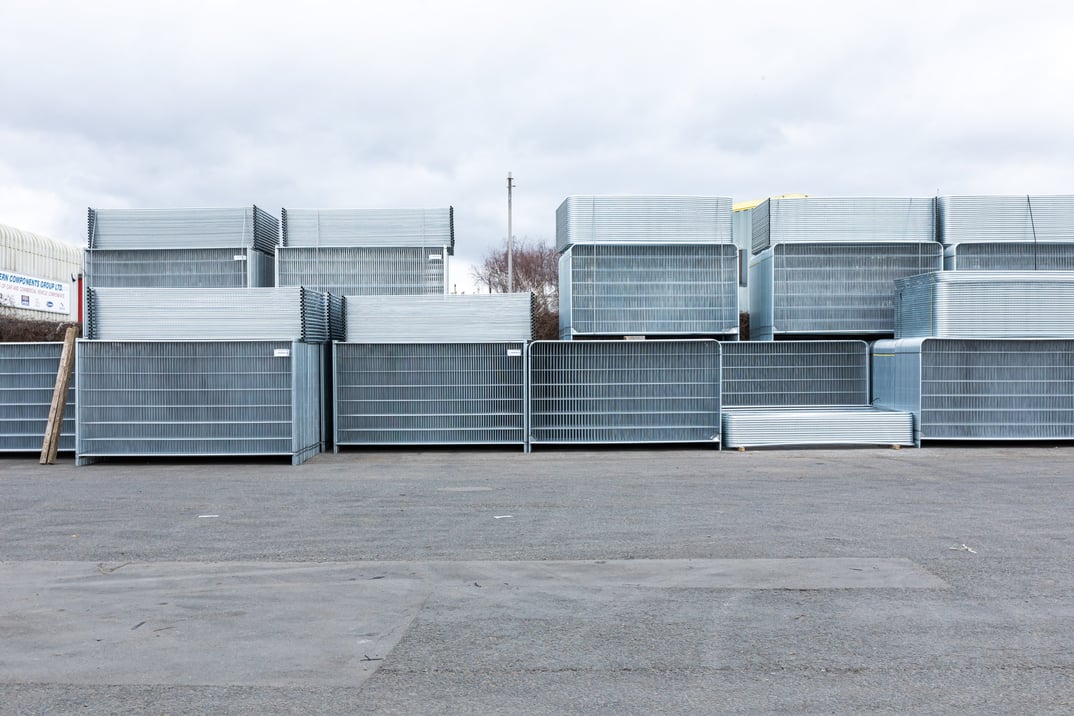Proper fencing ensures you section off your building site and prevent unauthorised persons having access to it. Standard site fences are 3.5 metres wide and 2 metres high, and are used to section off a building site’s largest areas. But there are many different types of site fencing that can be used these days. How do you decide which type is most suitable for your building site? And how many fences do you need? This blog explains what you need to take into account.
The dimensions of different types of site fences
As well as standard site fencing, you can also use Readyhoard fence panegls and crush barriers on your building site. But these fences have specific dimensions. The standard dimensions of these site fences are:
-
- Anti-Climb fence panel: 3.5 metres wide and 2 metres high
- Readyhoard fence panel: 2.2 metres wide and 2 metres high
- Crowd barrier: 2.3 metres wide and 1 metres high
There are also 2.2 metre wide fitting elements and 1.2 metre wide pedestrian gates available. Site fencing is 2 metres high as standard, but can also be supplied with a height of 1 or 2.45 metres.
Building site dimensions
The size of your building site is obviously the most important aspect to take into account when determining the number of site fences you need. Standard site fences are 3.5 metres wide and used to section off the building site’s biggest areas.
It’s very unlikely that your building site can be perfectly divided into 3.5-metre sections, however, so you’ll probably need extra sections to install the site fencing appropriately. Extra fencing is also often required on the building site itself in many cases, for example to section off a separate area or moving objects such as a crane.
Building site location
As well as the size of your building site and fences you need, the location of the site is also an important factor. In inner-city areas, for example, you often have to work in smaller areas that need sectioning off. And there's also a much greater possibility you’ll need to consider passers-by and traffic. Readyhoard fencing can be a good solution in this case. This type of fencing is 2.2 metres wide and has a sheet-piling profile, which gives you more flexibility in terms of positioning the fences.
Readyhoard fencing also has the benefit of partially or fully preventing people from being able to see in. This helps keep traffic flowing because people aren’t distracted by work activities on the building site, and also improves security because valuable materials are kept hidden from view. Workers can work without being disturbed, and won't experience any difficulties from headlights, for example.
Always start with the building site design
It’s important to not just look at the building site's circumference and location. The design of your building site also determines the type and amount of fencing that you need. Is there an inner and outer section? How is personnel and vehicle access organised? Where is extra security required? This doesn’t just determine how much fencing will be needed, but also the type of fencing and accessories required. Crowd barriers, for example, are ideal for guiding pedestrians along the right route. And 1-metre-high site fencing in combination with baseplates is very suitable for guiding traffic.
Which type of fencing is suitable for your building site?
Do you want to find out which fences and accessories are best for your building site? Make an appointment with our advisers and ensure optimal use of the right fencing.



.png?width=79&name=UK%20Round%20104%20px%20(2).png)